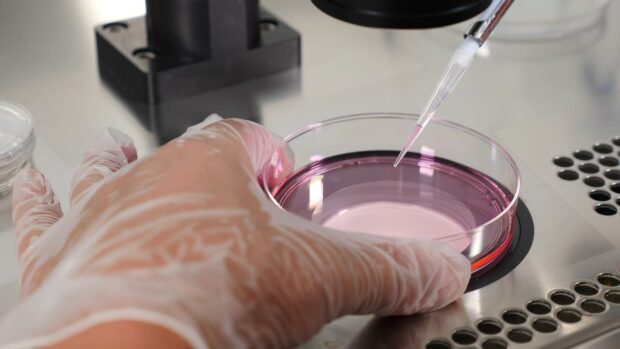Devices developed by Aberdeen University that calculate IVF success rates are being launched in the United States.
The free tools are now being introduced into IVF treatment plans on the other side of the Atlantic.
Two separate devices, each developed by the Granite City institution, will help couples predict their chances of IVF success.
The first calculator will check the chances of having a baby over one or more complete cycles of IVF treatment from the point of starting treatment.
A second device, which looks at the chances from the first fresh embryo transfer, will also be utilised.
Both the tools have already assisted thousands of UK couples in managing their expectations of treatment success.
Researchers turned their attention to the United States due to statistics showcasing that two percent of all babies born are now conceived via IVF treatments.
Help temper expectations
Using fertility data collected by the Society for Assisted Reproductive Technology (SART), which includes over 90% of reported IVF treatment cycles in the United States, the Aberdeen researchers were able to build calculators specifically tailored to the national population.
Aberdeen University’s Dr David McLernon leads the research.
He said: “Our free calculators help to shape couples’ expectations, allowing them to plan their treatments more efficiently and to prepare emotionally and financially.
“The UK models are used by between 3,000 to 5,000 couples each month, helping to inform how successful their treatment might be.
“Our previous IVF prediction calculators were primarily for use by UK couples who are starting treatment. Together with the Society for Assisted Reproductive Technology, we have developed new calculators tailored to couples and treatment practices in the USA.”
What is IVF?
In vitro fertilisation (IVF) is one of several techniques available to help people with fertility problems have a baby.
During the process, an egg is removed from the woman’s ovaries and fertilised with sperm in a laboratory.
The fertilised egg, called an embryo, is then returned to the woman’s womb to grow and develop.
It can be carried out using eggs and sperm from the couple hoping to get pregnant or from donors.
Possible emotional and physical strain
Taking into account the characteristics of couples and their treatment information, their fertility chances can be predicted for up to three IVF cycles.
Dr McLernon added: “The post-treatment calculator is particularly novel as it revises predictions for couples embarking on their second round of IVF whose first round was not successful.
“These are very difficult decisions, putting huge strain both emotionally and financially on couples, and our calculators offer a simple way for them to gain a better understanding of their personalised chances of successful treatment.
“While nothing can ever be guaranteed, our calculators are helping couples to better understand the range of choices that they face and the impact that these factors have on success rates for IVF.
“This information is difficult to get to grips with but our calculators allow it to be presented to them in a clear and concise way so that couples can understand their likely chances of successful treatment.”

